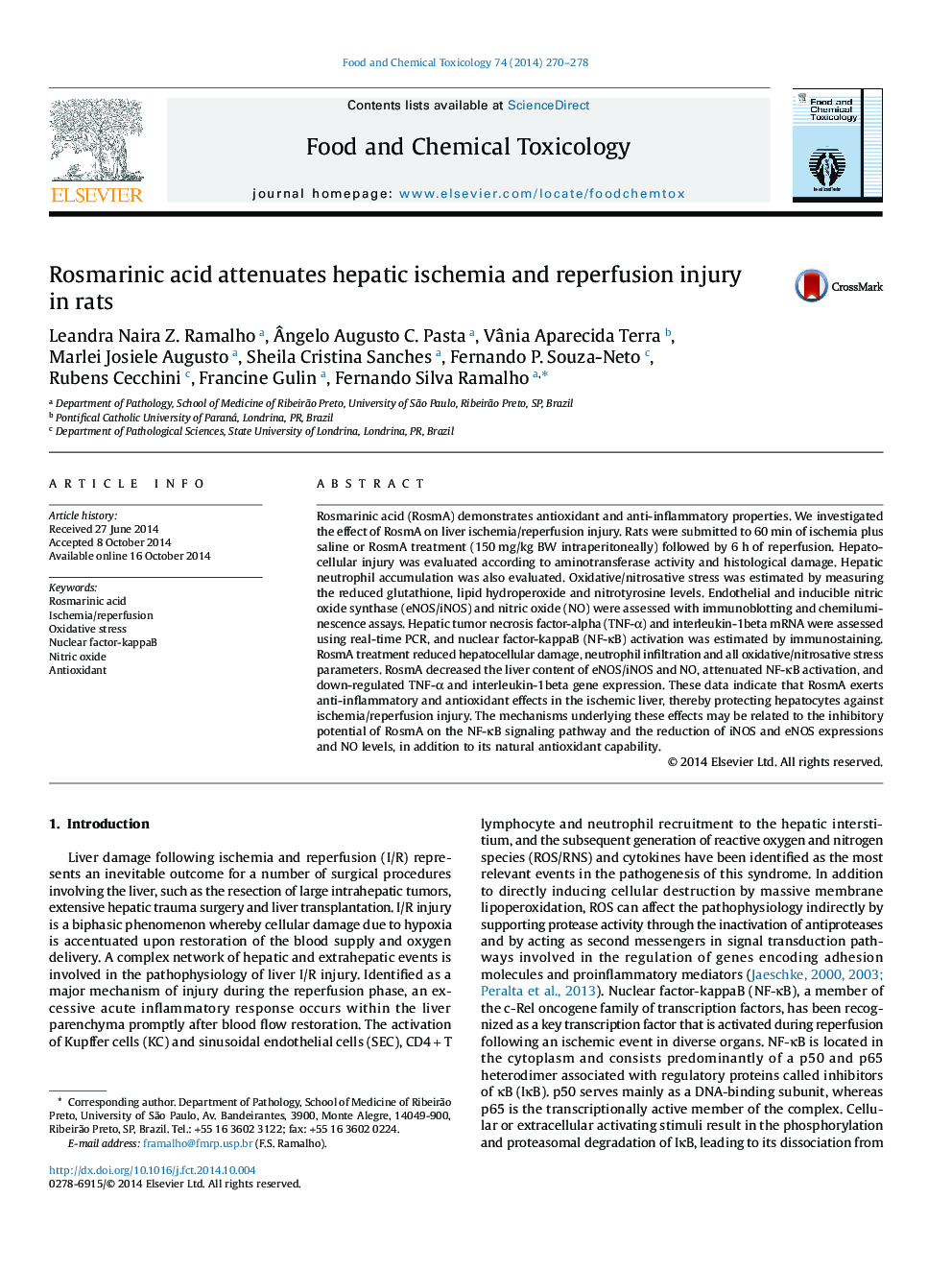| Article ID | Journal | Published Year | Pages | File Type |
|---|---|---|---|---|
| 5850006 | Food and Chemical Toxicology | 2014 | 9 Pages |
â¢Rosmarinic acid (RosmA) protects hepatocytes against ischemia/reperfusion (I/R) injury.â¢RosmA attenuates tissue oxidative/nitrosative stress following liver I/R.â¢RosmA reduces hepatic eNOS and iNOS expressions and NO levels following liver I/R.â¢RosmA inhibits the nuclear factor-κB signaling pathway in the setting of liver I/R.â¢RosmA exerts potent anti-inflammatory and antioxidant effects in the ischemic liver.
Rosmarinic acid (RosmA) demonstrates antioxidant and anti-inflammatory properties. We investigated the effect of RosmA on liver ischemia/reperfusion injury. Rats were submitted to 60âmin of ischemia plus saline or RosmA treatment (150âmg/kg BW intraperitoneally) followed by 6âh of reperfusion. Hepatocellular injury was evaluated according to aminotransferase activity and histological damage. Hepatic neutrophil accumulation was also evaluated. Oxidative/nitrosative stress was estimated by measuring the reduced glutathione, lipid hydroperoxide and nitrotyrosine levels. Endothelial and inducible nitric oxide synthase (eNOS/iNOS) and nitric oxide (NO) were assessed with immunoblotting and chemiluminescence assays. Hepatic tumor necrosis factor-alpha (TNF-α) and interleukin-1beta mRNA were assessed using real-time PCR, and nuclear factor-kappaB (NF-κB) activation was estimated by immunostaining. RosmA treatment reduced hepatocellular damage, neutrophil infiltration and all oxidative/nitrosative stress parameters. RosmA decreased the liver content of eNOS/iNOS and NO, attenuated NF-κB activation, and down-regulated TNF-α and interleukin-1beta gene expression. These data indicate that RosmA exerts anti-inflammatory and antioxidant effects in the ischemic liver, thereby protecting hepatocytes against ischemia/reperfusion injury. The mechanisms underlying these effects may be related to the inhibitory potential of RosmA on the NF-κB signaling pathway and the reduction of iNOS and eNOS expressions and NO levels, in addition to its natural antioxidant capability.
